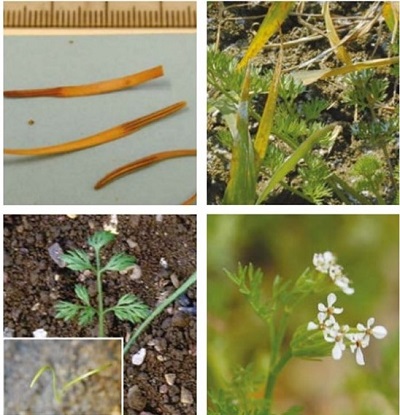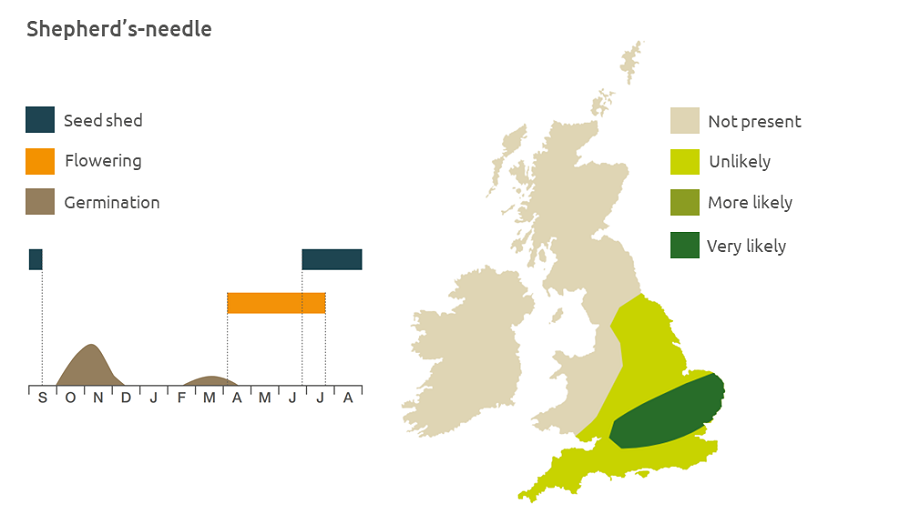- Home
- Knowledge library
- Distribution and biology of shepherd’s-needle in the UK
Distribution and biology of shepherd’s-needle in the UK
Shepherd’s-needle is a highly competitive weed in cereals. Find out how to identify and control it.
Overview
Shepherd’s-needle (Scandix pecten-veneris) is highly competitive in spring cereal crops and open crops of winter wheat, even when high levels of nitrogen are applied. It has re-appeared in some areas of the country in the last few years, preferring light soils. It can reduce combine efficiency when the stems and long seeds can become trapped. Shepherd’s-needle reproduces only by seed. Seeds are dispersed mechanically from the parent plant and can also hook onto hair or clothing.
- It is particularly competitive in winter wheat and spring crops
- It has value to biodiversity
Description
It is a short, almost hairless annual, growing up to 30 cm tall, with finely divided and subdivided leaves. When supported by the crop it may grow to 60 cm. The flowerheads are groups of up to ten tiny white four-petalled flowers.
Key features
Young plant: The cotyledons are pointed and very long.
Flowers: As the fruits mature and extend, the flowers appear to be on top of ‘needles’.
Lookalikes
Shepherd’s-needle may be confused with wild carrot as young plants: the first true leaves of wild carrot are hairy and coarser than those of shepherd’s-needle, which has few hairs. Shepherd’s-needle cotyledons are much longer and thinner than those of wild carrot.

Location and life cycle

Geographic distribution
Shepherd’s-needle is a rare lowland weed, found up to an altitude of 320 m, growing in cultivated areas such as old or current arable land and gardens.
Soil type
It likes warm, preferably chalky clay soils which are dry in summer and nutrient-rich.
Seed statistics
- Seed longevity: <1 year
- Seed weight: 20 mg
Management
For advice on herbicides, please speak with your agronomist or adviser.
When was this information last updated?
This page is based on content from the encyclopaedia of arable weeds publication. Since it was first released in 2008, the publication has been redesigned several times but not revised. However, it remains a good foundation for general information on the distribution and biology of weeds.

